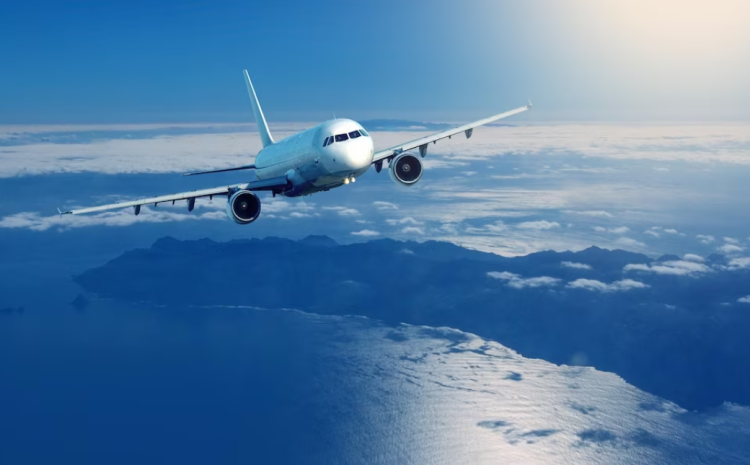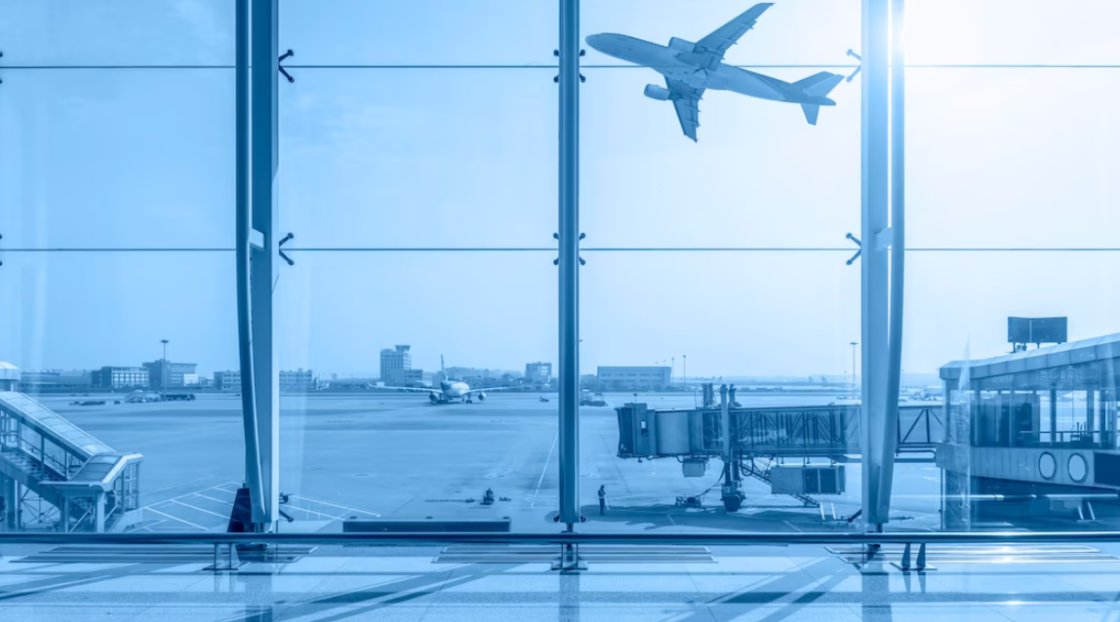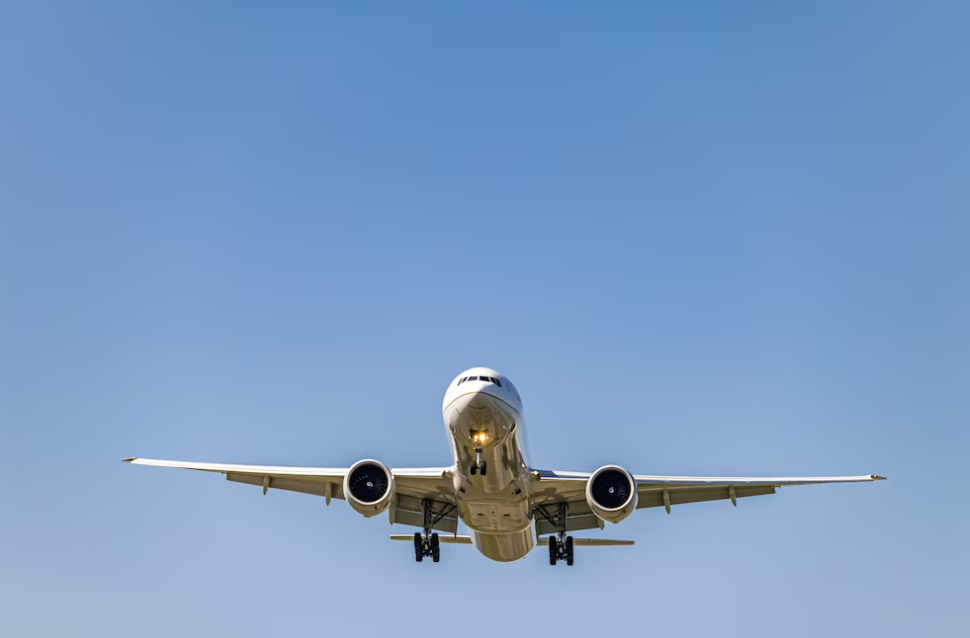Airplane Fuel Usage: What You Should Know

Amid growing climate change concerns and rising fuel prices, the question of “how much fuel does an airplane use?” gains significance. For instance, a Boeing 747 consumes an average of one gallon of fuel every second, totaling up to a staggering 36,000 gallons during a ten-hour flight.
In this article, we delve into the details of average flight fuel consumption, identify the phase that utilizes the most fuel, and explore the factors influencing overall fuel consumption levels. Read on to uncover insights into sustainable aviation and the pursuit of more eco-friendly air travel.
Airplane Fuel Consumption
Curiosity about airplane fuel usage leads us to explore the question: “How much fuel does a plane use?” According to Boeing’s website, the average 747 flight consumes approximately five gallons of fuel for every mile traveled.
Although this may seem like a significant amount, considering the large number of passengers onboard, the statistics become more favorable. A Boeing 747, with over 500 passengers, covers one mile using just five gallons of fuel.
To put it in perspective, this means the plane burns roughly 0.01 gallons of fuel per person per mile, achieving an impressive 100 miles per gallon per person. Compared to the average car, which achieves about 25 miles per gallon per person, air travel proves to be relatively fuel-efficient.
Fuel consumption varies based on the flight’s distance and duration. A short-haul flight like the Airbus A320’s four-hour journey between London and Athens may burn under ten tonnes of fuel, while a long-haul flight like the Airbus A380’s seven-hour trip between London and Dubai could use almost 80 tonnes. Numerous factors, including aircraft model, weather conditions, and altitude, influence an aircraft’s fuel consumption.
Fuel Consumption During Flights: The Dominant Phase Revealed
The phase of cruising consumes the most fuel during a flight, surpassing other stages significantly.
Data compiled by the Official Airline Guide (OAG) confirms that in every surveyed flight, cruising accounted for at least 50% of the total fuel burn. Despite this fact, many people mistakenly believe that takeoff consumes the most fuel.
The explanation is straightforward: takeoff requires a substantial amount of fuel in a short duration, as the aircraft needs considerable energy to ascend into the air. However, cruising constitutes the majority of the flight time, where the aircraft steadily consumes fuel. When comparing the fuel used during takeoff to the overall fuel consumption, the significance of takeoff diminishes.
Surprisingly, taxiing on the runway can burn between 2% to 17% of the total fuel used during a flight, particularly on shorter flights. To minimize fuel consumption during taxiing, many airlines opt for tugs to move planes while grounded. Nonetheless, most aircraft still engage their own power for taxiing at some point during the flight. Understanding the distribution of fuel consumption throughout flight phases is essential for optimizing fuel efficiency in air travel.
Comparing Fuel Economy Among Airlines

When selecting an airline for your journey, factors like frequent flyer programs and ticket prices often take precedence. However, one crucial aspect often overlooked is the fuel economy of each flight.
Similar to how some car models are more fuel-efficient than others, the same applies to different aircraft. To gauge an airline’s fuel efficiency, it’s essential to consider the miles per gallon (mpg), indicating how far one seat can travel on one gallon of fuel.
| Carrier | Fuel Efficiency Improvement (%) |
|---|---|
| Frontier Airlines | Almost 4% |
| Spirit | 7% |
| Southwest | 7% |
| JetBlue | 26% |
Data from the International Council on Clean Transportation (ICCT) in 2019 revealed that Frontier Airlines stood as the domestic US carrier with the lowest fuel consumption in 2017 and 2018. The adoption of new aircraft like the Airbus A320neo led to an almost 4% improvement in Frontier’s fuel efficiency during those years.
In contrast, the second and third-placed carriers, Spirit and Southwest, consumed 7% more fuel on equivalent trips. JetBlue, the last-placed carrier, used a staggering 26% more fuel on comparable trips than Frontier in 2018.
The ICCT also disclosed that domestic US airlines collectively consumed 12.5 billion gallons of fuel in 2018, marking a 17% increase from 2009. The rise in passenger demand and flight miles has caused jet fuel emissions per person in the United States to be approximately eight times higher than the global average.
Factors Impacting Aircraft Fuel Consumption
Factors affecting fuel consumption:
- Flight Distance;
- Aircraft Type and Model;
- Aircraft Weight and Size;
- Number of Passengers;
- Engine Type and Efficiency;
- Flight Altitude and Speed;
- Weather Conditions;
- Headwind and Tailwind;
- Jet Stream Direction;
- Flight Route and Planning;
- Airline Operations and Practices;
- Aircraft Maintenance and Condition;
- Load Factors and Seating Density;
- Technological Advancements;
- Wing Design and Configuration;
- Engine Fan Diameter;
- Takeoff and Climb Phases;
- Cruising Phase;
- Landing and Taxiing Phases;
- Fuel Type and Quality.
The fuel efficiency of an aircraft is influenced not solely by the airline but rather by various flight-specific factors. Longer flights generally tend to be more fuel-efficient, but with jumbo jets, the scenario may differ. For instance, Boeing’s 777-200ER model achieves an impressive 82 miles per gallon when fully packed for a 3,000-mile trip. However, the mileage drops to 76 when the distance extends to 6,000 miles. Moreover, larger airplanes may not necessarily be more fuel-efficient than smaller ones. The added weight of supporting a wide plane can offset potential gains in gas mileage.
A study by the International Council on Clean Transportation (ICCT) in 2018 compared the fuel efficiency of top airlines across the USA, Asia, and Oceania. It revealed that Qantas, Asiana, and Korean Air had the lowest overall fuel efficiency. Surprisingly, larger aircraft with quad engines are less energy-efficient than twinjets due to increased wing weight and smaller engine fan diameter. They often fly with relatively fewer passengers, resulting in lower seating density and passenger load factors, making them 24% less fuel-efficient than twinjets. External elements also play a vital role in fuel consumption. Flying into headwinds significantly increases fuel consumption per mile, while the jet stream’s direction greatly influences overall fuel usage at high altitudes.
To optimize fuel consumption, pilots carefully compile flight plans based on weather conditions, jet stream direction, and other factors affecting speed and altitude. By considering these influencing factors, airlines strive to enhance fuel efficiency and contribute to sustainable air travel practices.

Conclusion
The world’s most popular passenger jets are capable of consuming a gallon of fuel per second. However, when considering the number of passengers on board and the distance covered, air travel can be more efficient than car travel.
As fuel prices continue to rise, and concerns about climate change grow, airlines are increasingly prioritizing fuel efficiency in commercial airplanes. Aircraft manufacturers must lead the way in technological advancements to ensure a greener and more sustainable future for air travel.